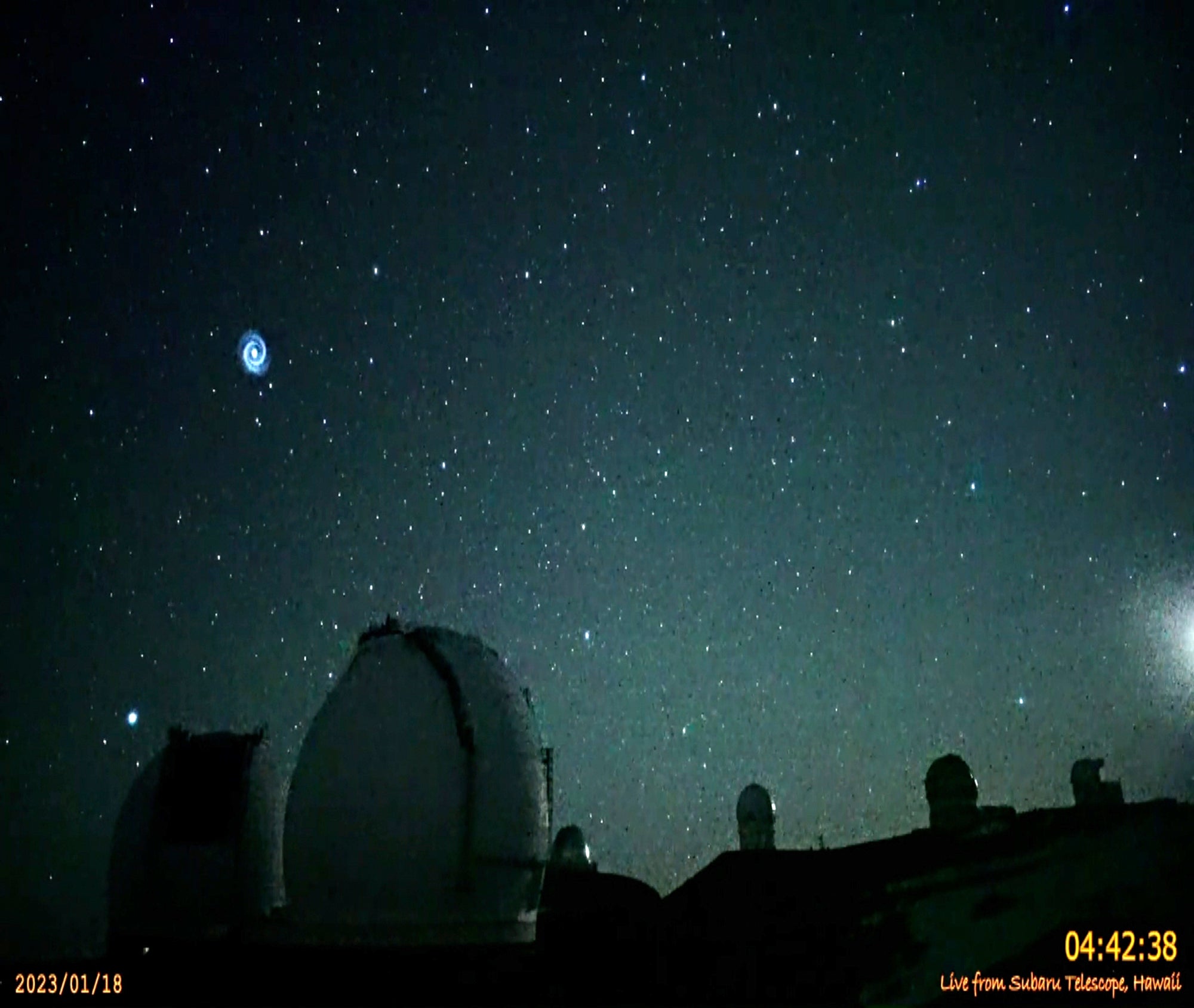Spiralling ‘whirlpool’ appears to open up in the sky
A camera atop Hawaii’s tallest mountain has captured what looks like a spiral swirling through the night sky

A swirling spiral appeared to have opened up in the night sky after a recent SpaceX launch.
The blue whirlpool – which looks something like a miniature galaxy – appears to have been left behind when the company used one of its Falcon 9 rockets to send a GPs satellite into orbit.
It looks as if it has come from distant space, or like a supernatural hole might be opening up in the sky. But the actual explanation is much more earthly, say experts.
After the second stage of the rocket deployed the satellite it was carrying, it ejected any leftover fuel before coming back to Earth. That sent it into a spin, and it left behind a cloud of frozen fuel crystals – which lit up in the eerie spectacle when they were hit by sunlight.
The images were captured on 18 January by a camera at the summit of Mauna Kea outside the National Astronomical Observatory of Japan's Subaru telescope.
A time-lapse video shows a white orb spreading out and forming a spiral as it moves across the sky. It then fades and disappears.
Ichi Tanaka, a researcher at the Subaru telescope, said he was doing other work that night and didn't immediately see it. Then a stargazer watching the camera's livestream on YouTube sent him a screenshot of the spiral using an online messaging platform.
“When I opened Slack, that is what I saw and it was a jaw-dropping event for me,” Tanaka said.
He saw a similar spiral last April, also after a SpaceX launch, but that one was larger and more faint.
The location of the spiral on 18 January matched where the second stage of the SpaceX rocket was expected to be after its launch.
SpaceX didn't respond to an email seeking comment.
Tanaka said the observatory installed the camera to monitor the surroundings outside the Subaru telescope and to share Mauna Kea's clear skies with the people of Hawaii and the world.
Someone watching the sky in less clear conditions, for example from Tokyo, might not have seen the spiral, he said.
The livestream is jointly operated with the Asahi Shimbun, a major Japanese newspaper, and frequently gets hundreds of viewers. Some tune in to watch meteors streak across the sky.
The summit of Mauna Kea has some of best viewing conditions on Earth for astronomy, making it a favored spot for the world’s most advanced observatories. The summit is also considered sacred by many Native Hawaiians who view it as a place where the gods dwell.
Additional reporting by Associated Press